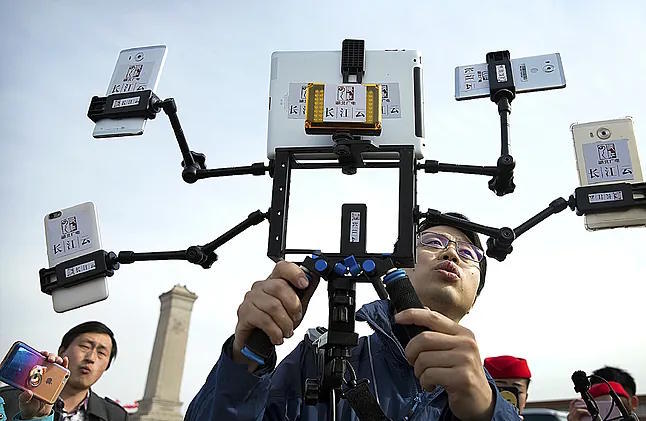In the Zhangjiang High-Tech Park, the unique Silicon Valley of Shanghai, every new chip, trained algorithm, or automated factory embraces the same obsession: that China will no longer depend on anyone to sustain its development. This anxiety for self-sufficiency, which is now an existential urgency, can be seen in other major technological centers such as Shenzhen or Hangzhou.
In the race to close the technological gap, the regime is tightening its grip with increasing force. For a long time, during the years of the so-called "Chinese economic miracle," one of the recipes for the success of the Asian giant was the entry of foreign technology in exchange for access to the vast local market.
Many Chinese technology firms learned and copied, even with significant improvements, from their Western counterparts. But this symbiosis that worked optimally ended up becoming a vulnerability for Beijing when the United States, in a maneuver to try to curb the technological development explosion of its already major competitor, began restricting Beijing access to strategic components, especially semiconductors and advanced software.
Against this trauma of excessive dependence, the Asian superpower is now seeking to redefine its industrial strategy with technological self-sufficiency as the cornerstone of its power and national sovereignty. This is the purpose embraced by the upcoming five-year plan, the country's fifteenth since 1953, which Chinese leaders discussed last week. The approach, on paper, is easy to explain: to further reduce dependence on the US, much more money must be invested in technology and advanced manufacturing.
This was the idea conveyed on Monday by Communist Party (CPC) officials in a meeting with entrepreneurs from the Shanghai technology park, promising them that the government will allocate many more resources, especially in the production of advanced chips. "In less than 10 years, we will surpass the US in the development of these semiconductors," one of the officials asserted.
All eyes in China are now focused on learning more details about the new five-year plan, the roadmap for the next five years. Only China has been able to maintain a centralized planning system for more than seven decades. In the 1950s, the focus was on building factories. In the 1980s, it was on economic reform. In the 2000s, it was on opening up to the world. Now, it is about achieving technological self-sufficiency.
"China will develop prospective plans for emerging industries and promote areas such as quantum technology and biofabrication that can become new growth engines. We expect these sectors to gain strong momentum, with the new technology sector having a market potential of 10 trillion yuan (over one trillion euros)," explained Zheng Shanjie, head of the National Development and Reform Commission, the country's main economic planner.
State media have highlighted that Chinese politicians have renewed the goal for China to be the world leader in science and technology by 2035. Beijing is already the dominant power in areas such as electric vehicles, 5G infrastructure, or green energy, but fields like AI and semiconductors are crucial for supremacy in emerging technologies as well. The statement issued after last week's plenary session included the space sector for the first time as one of the main priorities in the modernization campaign.
"The five-year plan will focus on creating scenarios for the application of artificial intelligence and manufacturing, as well as pioneering future industries such as smart driving, brain-computer interfaces, or quantum information," states an article in the People's Daily, the official newspaper of the CPC.
One of the concepts frequently mentioned in official statements about the five-year plan is that of "new productive forces," often used by President Xi Jinping to emphasize that innovation in technology and cutting-edge manufacturing must be at the core of all policies.
China's annual R&D spending has skyrocketed in the last two decades. Last year, over 3.6 trillion yuan (over 500 billion euros) were invested, an 8.9% increase from 2023 and six times more compared to, for example, 2009. Beijing will continue with an aggressive technological strategy that includes a flood of subsidies and capital. However, as many experts point out, these policies have generated extreme competition and a deflationary spiral domestically that could play against them in the future.
"The government sees the entire country as a chessboard and continues to move firmly in the right direction while other nations remain trapped in the myopia and constant policy changes of multi-party systems," boasted Beijing's media mouthpiece, highlighting the competitive advantage that autocracy has in setting long-term plans without internal questioning of Xi Jinping's leadership.
